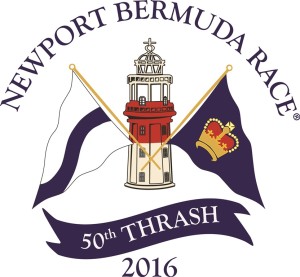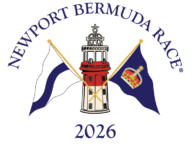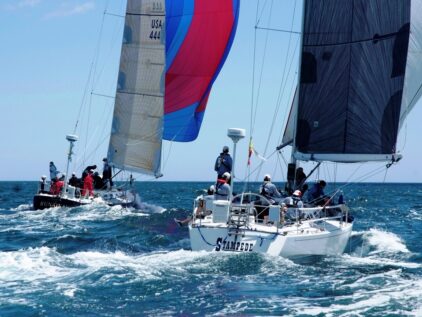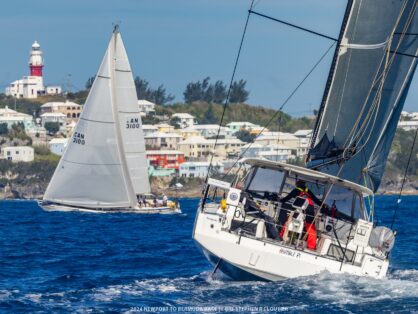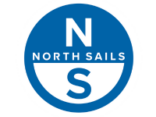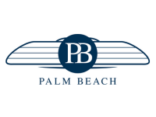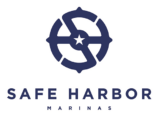John Rousmaniere reports on a new course record and other excitements of the breezy 2012 race, the fastest in the Newport Bermuda Race's 110-year history.
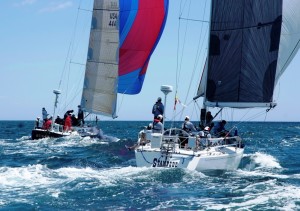
“An out of body experience.” That's how offshore veteran Larry Glenn described the 2012 Newport Bermuda Race. His family boat Runaway, in the seven-entry J-44 Class in the St. David’s Lighthouse Division, finished with an elapsed time of 76 hours. That was only five hours slower than the elapsed-time record set in Glenn's first race, back in 1956, by the 73-foot yawl Bolero. “Can you imagine a 44-footer finishing near Bolero’s record?” Glenn asked rhetorically. “This was a very, very unusual race in fast, cool, dry northerly air, and it was a great ride.”
His was one of the race's many great rides. George David’s 90-foot fixed-keel Rambler averaged 16 knots and finished after 39 hours of exhilarating reaching. Her time sliced 14 hours off the previous official race record set by Roy Disney’s Pyewacket in another reaching race, in 2002, and also nine hours off the unofficial course record established in 2004 by the 86-foot cant-keeler Morning Glory. “These were perfect conditions,” David said after the finish of his Gibbs Hill Division entry. “The most exciting moment was when we hit 26 knots. I’m so pleased with our performance. We have reduced the record by 25 percent, not bad for a boat that is now 10 years old.”
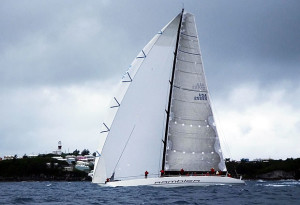
Scott King, in the 74-foot Team Tiburon in the Gibbs Hill Division, reported that the boat felt slow when the speed dropped to 11 knots. “I’ve been in boats where 11 knots was not even part of the plan. Just before we entered the Stream we saw a long streak of phosphorescence, as though a full moon was out. Dolphins were torpedoing through all this, right in front of us.” One of seven boats to break the elapsed time record, Team Tiburon sailed under the U.S. Merchant Marine Academy banner. Watch Scott King's exciting short race video.
Avoid Cruise Mode, Catch up on Sleep
Following the fast start on June 15, Rives Potts’ 48-footer Carina (2010 St. David’s Lighthouse Division winner and also the 1970 race's winner) joined the 160-boat parade to the favored waypoint marking the entrance to the Gulf Stream. Carina came to the race directly from a year-long circumnavigation of the globe, during which she had raced across the Atlantic and in the Fastnet and Sydney-Hobart races. Her hard-driving crew made five sail changes in the first few hours. Navigator Lexi Gahagan explained, "It’s always good to have boats around you, otherwise you go into cruise mode.”
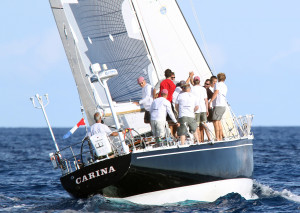
While Rambler, Team Tiburon, and a few other big boats carried the brisk northerly all the way to the finish, the mid-size and smaller fleets were overtaken by light, shifty winds that turned their race into a tactical battle. Carina played it right and won the St. David’s Lighthouse Trophy again, despite a time penalty because one of her professional crew briefly steered (only amateurs may steer in the St. David’s Division).
While nobody expressed regret about the wind, there were a few complaints about the quantities of water on deck and the noise below that made sleep difficult. None of this bothered crews in the wooden boats. A sailor in Dorade, which first raced to the Onion Patch in 1930 under Olin and Rod Stephens, provided the race’s best punch line when, asked if the going was wet, replied, “There was water everywhere, and THOSE VENTS REALLY WORK!!” A grey-haired, obviously well-rested sailor in the other Sparkman & Stephens woodie, Black Watch, was heard to muse, “I’d forgotten how quiet it is down below in a wooden boat in a messy sea.”
The Right Thing to Do
During this sensational sprint, the 2012 Newport Bermuda Race produced examples of exemplary seamanship and inspiring concern by sailors for their fellow mariners. The Swan 46 Flying Lady (with a crew of doctors) and the three-master Spirit of Bermuda, (a replica of a traditional Bermuda working vessel sailing in the Spirit of Tradition Division) were directed by the Bermuda Maritime Operations Centre to turn back and go the aid of a competitor with a dangerously seasick sailor. When conditions proved too rough to put medical supplies and personnel on board, the sailor was picked up by a cruise ship. The three boats finished the race and their crews were awarded special Seamanship Awards. A review of this incident is here.
Many post-race return deliveries to North America were discomforted and disrupted by a cold front sweeping across the Gulf Stream. In the rough seas and strong winds, one boat was abandoned and other boats suffered rigging problems. All were reminded that the delivery home can be at least as demanding as the race itself.
For more about the Newport Bermuda Race, click on this brief description, the race website, BermudaRace.com, or the guide to entry.
The Cruising Club of America Bermuda Race Safety-at-Sea Seminar will be held March 19-20 in Newport.
